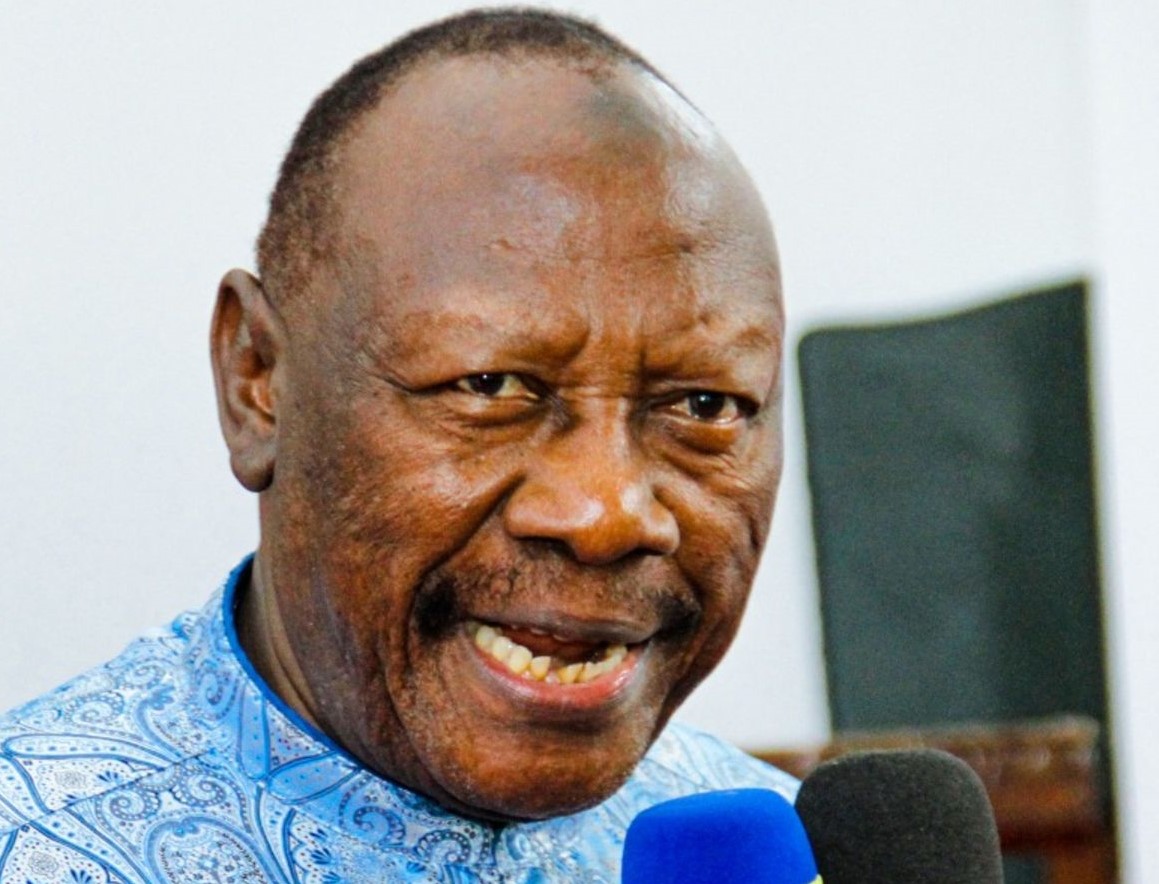Anissa Mpungwe putting Tanzania's fashion on the map

Anissa Mpungwe PHOTO | COURTESY
What you need to know:
- Celebrities across the world have worn Anissa’s iconic designs including the former US First Lady Michelle Obama on her first visit to Johannesburg, Solange Knowles, Anele Mdoda, Lira, Simphiwe Dana and Amel Larrieux.
Fashion is, to many, a platform to tell a story to your target audience through clothing and creativity; however, it holds different meanings for different people.
Anissa Mpungwe defines fashion as diversity.
She is the mastermind behind Anissa Mpungwe Atelier, formerly Loin Cloth and Ashes.
Celebrities across the world have worn Anissa’s iconic designs including the former US First Lady Michelle Obama on her first visit to Johannesburg, Solange Knowles, Anele Mdoda, Lira, Simphiwe Dana and Amel Larrieux.
About a year ago, Anissa moved back from South Africa to Tanzania and she recently sat with Life&Style and shared her journey in fashion.
Question: What does fashion mean to you?
Answer: I believe that fashion allows you to be who you are, and where you're from as you explore other personalities and inborn traits.
Through fashion, I get to be the observer and recorder of history through culture and storytelling in clothing.
How did you get into fashion?
It began when I was a high school student at St Mary’s Diocesan School for Girls. I used to sketch for friends as a hobby and I never saw it as anything more than that.
I joined university and chose to pursue graphic designing because I was hoping to get into movies and animation.
At the end of my first year at the university, it clicked to me that fashion is my calling. I switched to fashion at the same university and learned a lot about crafting.
At the end of my first year as a fashion student, I got a job as a design assistant and my experiences at the designer house taught me how powerful fashion is.
How were the early days of Loin Cloth and Ashes?
In the early days of my journey, I travelled to the US looking for an agent because in the fashion industry, you must have an agent who represents you overseas. I stayed there for a month knocking on doors, but nothing came off of it.
I came back to South Africa and met a Canadian friend at a party in Johannesburg. She told me about a place called Maboneng that was developing at the time.
Maboneng now turned into a cool creative hub that hosted Africa’s best in the fashion industry. In Maboneng, careers were launched. I was one of the first designers to move there.
What’s your creative process like?
It depends on the subject matter or the season that I’m creating for. Being in this industry for a while has given me the knowledge to know what my customer likes and does not like.
I also know what has sold and what has not. Other times I create depending on the statement that I want to give through my designs.
In South Africa, I was doing ready-to-wear designs that were a very cosmopolitan kind of style for the Johannesburg kind of girl who likes opulence and things that bling.
However, I have now moved to Tanzania, where the weather is different since it is very tropical. My designs now reflect home.
Why did you move back to Tanzania?
I decided to move back home after the Covid-19 pandemic happened. Among the countries that were affected was South Africa and a lot of my friends’ parents were passing away and it was like a wake-up call.
I did not want to travel back home when things were not okay.
This was one of the most difficult decision that I have ever had to make and it took about a year to make that decision because I had lived in South Africa for 29 years and it was where my career sprouted and grew to the extent it currently is.
Describe the early days of your brand
I was very focused in the beginning. I was a curious person and my curiosity got me places.
I would email editors of different magazines and email them my work. I used to also look up photo shoots to simply understand what they were like.
My work ethic also kept motivating me to set goals that I achieved with time.
On the other hand, four things pressured me to work harder; I am a first born, a woman, a foreigner in South Africa and the first person in my family to pursue a creative career.
What challenges have you faced in your business?
My family does not have a business background and as a result, I did not understand how to conduct myself in the business sense.
I did not know how to do a business plan. One incident happened when I did the first competition show that launched my career where I was the first black woman and Tanzanian to win this show.
A lady called and told me that she loved one of the pieces in the collection and asked me to make it for her. I bought the fabric and made the clothing without any deposits.
I called her to inform her that her outfit was ready; she did not get back to me. I needed that lesson.
Why did you first name your brand ‘Loin Cloth and Ashes’?
I went to an Anglican School and we read the bible. There is a passage that says ‘Sackcloth and ashes’ which refers to the clothing people would wear when they are fasting. The inspiration came from that passage.
Why did you rename it to Anissa Mpungwe Atelier?
I have been in the industry for 17 years and I did the best I could with my former brand name. Another reason that led me to rebrand is my decision to move back.
I researched where the fashion industry stood in Tanzania and I saw a gap, which pushed me to rebrand to Anissa Mpungwe Atelier.
I want my name to be easily identified as Anissa Mpungwe from Tanzania when I represent my country overseas.
What gaps have you noticed in the fashion industry in Tanzania?
A lot of designers have opted for Instagram as their online store, which is a great idea since Instagram disrupted the market.
However, a lot of fashion designers do not have websites for their products. Websites are far more useful in case Instagram collapses because your customers would still be connected to you.
Another challenge is that we do not think internationally when it comes to the fashion market, however, we have to think bigger to scale up. Another challenge is the lack of secure payment gateways in Tanzania.
Now that you are back to Tanzania where the fashion industry is completely different from South Africa, How do you plan to tackle challenges that will be coming your way?
Now that I am back in Tanzania, I am trying to understand the ecosystem, work, and build with the fashion community that already exists here.
When building anything, you will be met with challenges. It is part of the process, and you can only tackle these challenges by getting support and aligning with partners that have similar goals.
I believe my country will understand that and support me. My hope is that we share in the same vision to nurture, develop, maintain, and promote Tanzanian fashion to the rest of the world, as we have so much talent here.
The biggest and most successful industries that we know and benefit from today started somewhere and required dedication, cooperation, and a shared desired to uplift its community. For me, it starts here, and I have a lot of work to do.
How many international showcases have you had?
I have had about 10 showcases in different countries outside South Africa including Portugal, the United States of America, the United Kingdom, Sweden, Mozambique, Kenya, Angola and Berlin.
The most memorable was my first local show in South Africa. I was nervous and it was my first time being backstage.
My first International fashion show in New York was also incredibly different than what I had pictured. It’s something I will never forget.
How did the recent fashion show in Portugal come about?
A: A woman called Lulu Shabel who is based in Geneva, Switzerland introduced me to it.
Her goal is to promote Africans outside of the continent, however, the product has to come from Africa. She sent me an application for the Creative Africa Nexus (CANEX) in Portugal and I applied.
There were three 300 entries and I was the only Tanzanian among 10 fashion designers who were selected in this showcase
How are you planning to reintroduce yourself to Tanzania?
I’m currently organising a homecoming show with another local designer who is well known and it will be conducted sometime in 2024.
It will be like a pilot and we will both contribute to each other’s growth. I will also be bringing my show producer who helped me grow in my career so that other creatives can connect with him to elevate their careers.
What is your advice to people aspiring to walk in your shoes as a fashion designer?
I would urge them to invest in themselves and learn about fashion formally, they could go to school because that’s a great starting point.
You could understand the fashion language and present yourself in a deserving manner.





